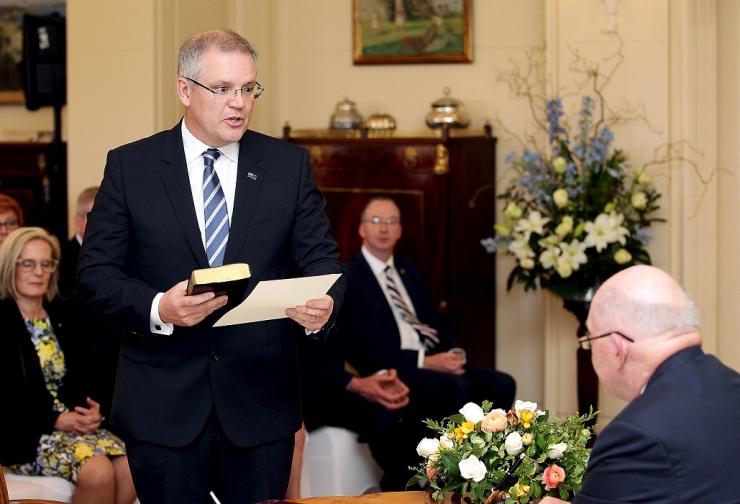-
Tips for becoming a good boxer - November 6, 2020
-
7 expert tips for making your hens night a memorable one - November 6, 2020
-
5 reasons to host your Christmas party on a cruise boat - November 6, 2020
-
What to do when you’re charged with a crime - November 6, 2020
-
Should you get one or multiple dogs? Here’s all you need to know - November 3, 2020
-
A Guide: How to Build Your Very Own Magic Mirror - February 14, 2019
-
Our Top Inspirational Baseball Stars - November 24, 2018
-
Five Tech Tools That Will Help You Turn Your Blog into a Business - November 24, 2018
-
How to Indulge on Vacation without Expanding Your Waist - November 9, 2018
-
5 Strategies for Businesses to Appeal to Today’s Increasingly Mobile-Crazed Customers - November 9, 2018
Budget deficit increases to $37.4 billion
Treasury says it will grow by just 2.75 per cent this year instead of 3.25 per cent, and next year by 4.5 per cent instead of 5.5 per cent.
Advertisement
The deficit is expected to blow out by another $26.1 billion over the next four years, with a slim surplus not predicted until 2020-21, a year later than promised under former Prime Minister Tony Abbott.
These new deficit figures assume the Senate will pass the stalled welfare cuts and a $1.3 billion cut to the Pharmaceutical Benefits Scheme, stuck since the 2014 budget.
“But this is the turning point when it comes to expenditure as a percentage of GDP, and we’ve been pleased over the last few months in particular to ensure that all the additional expenditure that came on since the last budget we’ve been able to cover off in terms of savings and other measures to ensure that we’re actually adding to the bottom line outside of any impacts of parameter variations”.
Among those commitments were the $1.1 billion innovation package, $700 million to re-settle 12,000 refugees and a host of smaller initiatives. “Most portfolios have had to make a contribution to savings, as is appropriate”, Communications Minister Mitch Fifield said on Monday.
These include saving $704 million from increasing compliance for welfare recipients, $639 million by removing bulk-billing incentives for pathology services, $472 million by fine-tuning subsidies for aged care, and $441 million in child care cuts by reducing the child care subsidy for families earning more than $250,000 a year.
Scott Morrison told Australians that despite the falling price of iron ore wiping out $7 billion from tax revenue over four years, “our economy is heading in the right direction”.
Tax receipts for this year alone are down by $1.9 billion and total receipts are down by $3.1 billion.
With a sluggish economy, growth for this financial year has been revised down by 0.25% to 2.5%, with growth next financial year trimmed from 3.25% to 2.75%.
He stressed the return to surplus needed to be done “patiently and responsibly” and not with harsh cuts.
Labor leader Bill Shorten said the MYEFO highlighted “the monumental failure of two years of economic and budget management by the Coalition”.
“The transition is creating a new and emerging momentum in our economy”.
The Treasurer said his guiding principle in deciding which areas of government were ripe for spending cuts was to look at which programs were “fit for purpose” and delivering the outcomes for which they were designed.
Advertisement
“Budget fix is getting harder and it’s looking further away”, the Deloitte Access Economics economist said. Investment in new housing stock is up 7.7% this year, from a forecast of 6.5% in May’s budget.





























